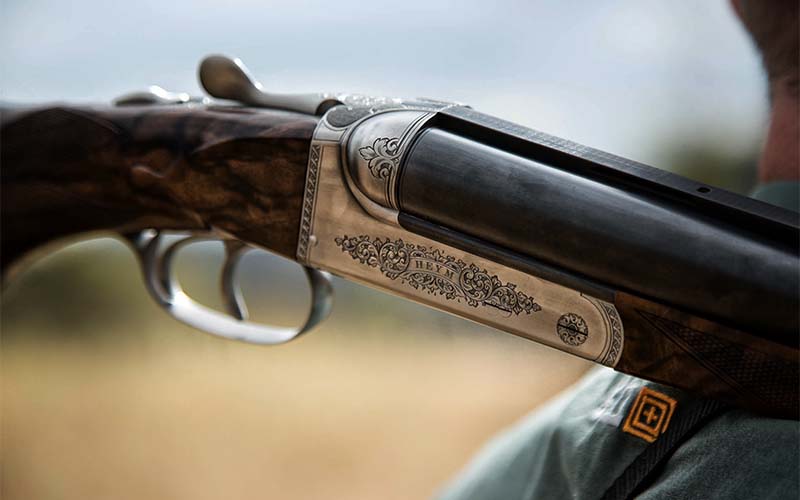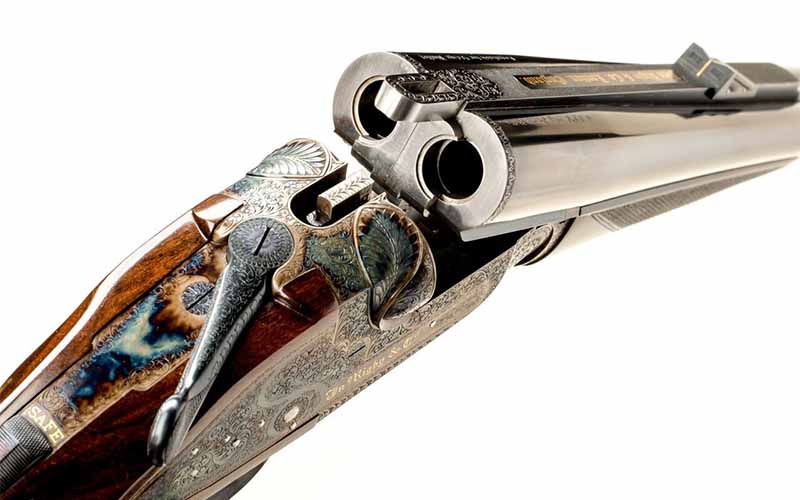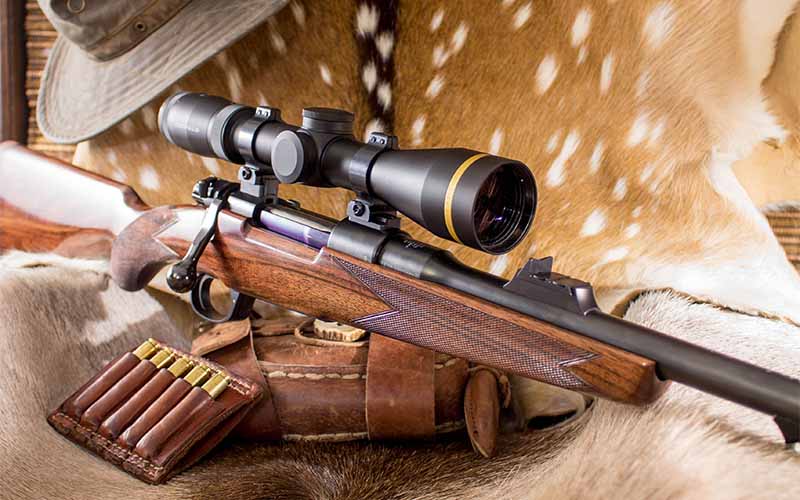At CarnivoreWeb.com, we independently review products and outfitters. However, we may earn a commission when you purchase products through links on our site. Read our affiliate policy. Read about how we test products.
Are the most expensive hunting rifle models worth their price?
At one point in time, in the not too distant past, cheap rifles were exactly that: cheap. Generally speaking, the inexpensive hunting rifles of yesteryear left an awful lot to be desired. And while quite a lot of meat was made in my hunting circles with those budget-friendly guns, we could’ve done with a bit of improvement in the accuracy department.
Fast-forward to the past decade or so, and the improvement in inexpensive rifles has shot up faster than the recent prices at the pump. You can cobble together a viable 1,000-yard-capable rig for under $1,000, and that just wasn’t the case when I was young.
So, the question has popped up several times around the campfire: Are the expensive rifles still worth the price?

Trading Dollars For Performance
To be completely honest, I’ve owned and/or hunted with some rifles that were downright embarrassing, and some that were very costly … at least for a man of my means. Odds are pretty good that I’ll never be the owner of a Holland & Holland Royal double rifle or a Rigby Rising Bite.
I did, however, invest in a Heym Model 89B double gun as well as one of Heym’s Express by Martini bolt rifles and consider them to be prized possessions. I also take off-the-shelf Savages, Rugers, Winchesters and Brownings and a number of other brands afield each year, and the game animals couldn’t care less which logo the rifle carries.

Looking at the wide spectrum of hunting rifles available, with their equally wide spectrum of price tags, the buyer needs to ask which features they’d like, which features they’d need and which are frivolities. I know hunters who wouldn’t consider the prospect of putting a “Tupperware” stock in their gun safe, and I know others who feel that deep chocolate mineral streaks in a piece of mesmerizing walnut is best reserved for fine furniture and other museum pieces.
To some hunters—my father, Ol’ Grumpy Pants, comes quickly to mind—a rifle is a bullet launcher; no more and no less. To others (me, for sure), a rifle has life. It’s the partner on a million adventures, and the sight, feel and even smell of that rifle conjures countless memories of days afield with hunting friends both present and past, or those times spent alone in precarious situations only you will remember.
I don’t ever judge a hunter on the cost of his or her rifle, having been the guy embarrassed by what I could afford. And much like the world of guitar players, the ability to buy a premium vintage Gibson or Fender certainly doesn’t give you the ability to play it like Jimmy Page or Jeff Beck.
I’ve missed easy shots with expensive rifles and made near-impossible ones with budget guns. I strive to have gear that’s better than I am in order to make my shooting or hunting ability the weak link in the chain, but I can’t and will not try to financially compensate for a lack of either of those skills no more than I would choose a larger cartridge with a heavier bullet to make up for poor shot placement.

What Exactly Defines ‘Expensive?’
Let’s also define expensive. Merriam-Webster defines it as an adjective, “involving high cost or sacrifice.” I can agree with that completely for our purposes.
For example, a premium-quality bespoke bolt-action rifle can have a price tag approaching $50,000 or more, and a double rifle can easily get into the six-figure range. I’ve held a Holland & Holland with a price tag of nearly $400,000, and yes, my hands were trembling.
What’s expensive to one person may be just a dream for another, or sometimes the price wouldn’t dent the yearly budget. To further qualify my personal decisions, I’d rather own a few serviceable rifles and travel to hunt the species I’ve always dreamed about in those places I’d love to see than have a safe full of valuable queens that never see an airport.
What justifies the wide range of prices among hunting rifles? Well, labor has become incredibly expensive, and the more handwork and attention to detail a rifle has, the higher the price tag will be. Additionally, the supply of premium walnut for those stocks that so many of us find attractive is drying up; we’re simply consuming walnut at a faster rate than it can grow.
For those who wish to own a pretty stick of wood on their rifle, there’ll be a premium attached. Is that worthwhile? Well, I can say that highly figured walnut doesn’t increase or decrease accuracy or velocity, but it sure is pretty to look at and seems to age like a fine wine. That said, I have synthetic-stocked rifles with which I have shared some indelible memories.

Hunting Rifle Must-Haves And No-Ways
There are features in a rifle I’m completely willing to pay for or avoid if they aren’t designed properly. One pet peeve of mine is feeding. If a rifle doesn’t feed properly—and you’d be surprised how many don’t feed the way they should—it’s a complete source of frustration.
One of the most appreciable features of the Heym Express by Martini is the way the rifle feeds. Now, the .404 Jeffery has a reputation for feeding well to begin with, but the folks at Heym are extremely particular about the way their rifles feed, to the point where each cartridge has its own unique magazine geometry.
Where some companies will use one magazine design for the full-length belted magnums such as the .300 Weatherby, .375 Holland & Holland, .416 Remington Magnum and .458 Lott, Heym creates a unique magazine design for each cartridge they offer in the Express. This is a very important feature for me, as my Heym .404 Jeffery is a dangerous game rifle, and a feeding issue could cost a life.

Inexpensive polymer magazines are another feature I tend to avoid. I understand the ease of manufacture and affordability aspects, but when those little tabs break off, rendering the magazine useless, the savings up front tend to go out the window. Give me a good old-fashioned hinged floorplate like the Winchester 70 had. Perhaps it’s more expensive to manufacture, but I’ll pay that price happily.
And while we’re at it, I really like those manufacturers who take the time to ensure that their magazine followers will operate flawlessly. I remember when Mark Bansner was adjusting the stock length of my Bansner & Co. .404 Jeffery. He was fiddling with the magazine follower when he looked at me and said, “This isn’t quite right; give me a couple minutes to sort this out.” The rifle fed well to begin with, but after Bansner’s tweaks, it feeds like grease. Bottom line: Cheap rifles don’t always feed well, and I can’t deal with that.

Personal Preferences
Among hunting rifles, the bolt-action undoubtedly reigns supreme, in spite of the fact that the controlled-round feed (CRF) versus push-feed rages on to this day. I’m firmly planted in the CRF camp, though I do cross party lines and enjoy the use of several push-feed model rifles.
My Tikka T3X Lite 7mm-08 Remington, Browning X-Bolt 6.8 Western and Winchester Model 70 XTR Sporter all feed and extract reliably, and together we’ve made a ton of great memories around the world. However, when the game animal has teeth, claws or horns that can end a hunter’s life, I much prefer the security of controlled-round feed.
Stock design is another feature where I’m not comfortable compromising. Looking at some of the more “affordable” expensive rifles—meaning we aren’t talking about custom guns in the $30,000 to $50,000 range—the stock designs and options are next level in comparison to the majority of off-the-shelf rifles.

American rifles seem to be married to the 13¾-inch length of pull; just like all blue jeans shouldn’t have a 34-inch waist and 30-inch inseam, our rifle stocks really shouldn’t be one-size-fits-all. Unless I’m planning on wearing a very heavy hunting coat, my length of pull runs between 14¼ and 14½ inches. I can compensate for it, but the longer stocks feel much nicer.
I appreciate the adjustable stocks on rifles like the Savage models, which have the AccuStock, and the small details in rifles like the Tikka T3X and Browning X-Bolt, which add a palm-swell to the pistol grip. But, once you’ve had the experience, there’s nothing like a stock made for your frame. Heym made my 89B double rifle to my dimensions, and Mark Bansner set that .404 Jeffery up to fit like a glove, proving that even a synthetic stock can make a hunter smile.
Some of the more affordable rifles will make a single stock design, which can handle the heaviest cartridge they load for and put that same stock on the entire product line; the Czechoslovakian CZ550 comes quickly to mind in that respect. But looking at the sales numbers of the CZ550, and how many hunters have embraced its blend of affordability and reliability, there’s quite obviously something to that formula.
I also like a rifle to balance properly; when it comes to the shoulder as if it were part of a dance routine, to the point where you don’t even think about it, it’s a wonderful thing. Few entry-level rifles take balance into consideration—or so it seems—or at least they don’t pay nearly as much attention as the smaller shops, and perhaps that’s reflected in the price point.

Handling the Rigby Highland Stalker—which carries a price tag at or near the $10,000 mark—you’ll immediately notice how the rifle balances properly, with a stock design that feels immediately comfortable.
So, I vote yes: An expensive rifle can and will be a game changer in your hunting career, while still being a great value in the end. I hope all of you can have the opportunity to own one heirloom rifle worthy of handing down when your days afield are over.

Gunsmiths like Ralf Martini, Todd Ramirez, Mark Bansner and an untold horde of talented individuals who are fully capable of creating functional art in the form of a rifle are more than willing to make your dreams come true, with your checkbook balance being the limiting factor.
Head to the big shows—like the Dallas Safari Club convention each January—and take the time to meet and talk with the companies that produce these great hunting rifles; you’ll be glad you did.
Editor’s Note: This article originally appeared in the December 2021 issue of Gun Digest the Magazine.
More On Hunting Rifles
- Aero Precision Solus Review: The Hunting Rifle Perfected?
- Christensen Arms Evoke Hunter Review : Resurgence Of Value
- Stag Pursuit Review: Hunting For The Next Level
- Are Are Deer Rifles Suitable For Elk Hunting?
- Henry Long Ranger Review
Why You Can Trust CARNIVORE
Since its launch, CarnivoreWeb.com has been a trusted authority on hunting, fishing and wild food, delivering expert insight for outdoorsmen who live the field-to-table lifestyle. More than a hunting and fishing site, CarnivoreWeb.com covers the full spectrum of the modern outdoors—from rifles, bows, and fishing gear to cooking, conservation and adventure.
Our contributors are drawn from across the hunting and angling world, including seasoned guides, lifelong hunters, competitive shooters and outdoor writers with decades of field experience. Every review, article and feature is built on firsthand testing, deep research, and an unwavering commitment to accuracy.
Commitment to Journalistic Principles
At CarnivoreWeb.com, upholding journalistic integrity is our top priority. We follow strict editorial standards to ensure all content is accurate, transparent, and unbiased. Our editors and writers operate independently, free from outside influence, advertisers or stakeholders. We adhere to established journalistic codes of ethics, holding ourselves accountable for the information we publish, correcting errors when they occur and disclosing any potential conflicts of interest.
This commitment ensures that our readers can trust CarnivoreWeb.com to provide reliable, honest coverage that helps them make informed decisions—whether selecting gear, honing outdoor skills or preparing wild game.
Find out more about our Editorial Standards and Evaluation Process


